Abstract
Netilmicin (Sch 20569) is an ethyl derivative of gentamicin C1a that is active against most Enterobacteriaceae, Pseudomonas aeruginosa, and Staphylococcus aureus isolates. Among 342 clinical isolates tested, all staphylococci; 92% of Escherichia coli, 93% of Klebsiella pneumoniae, and 92% of Enterobacter were inhibited by 0.8 μg or less of netilmicin per ml, but only 78% of P. aeruginosa were inhibited by 3.1 μg or less per ml. Most clinical isolates of enterococci, Serratia marcescens, and Providencia were not inhibited by 3.1 μg of netilmicin per ml. Like other aminoglycosides, the netilmicin in vitro activity was markedly influenced by the growth medium used, with activity decreased by sodium, calcium, and magnesium. Netilmicin was more active at alkaline pH. Addition of magnesium to Pseudomonas or Serratia pretreated with netilmicin produced inhibition of killing. Netilmicin was more active than gentamicin, sisomicin, tobramycin, or amikacin against E. coli and K. pneumoniae. Netilmicin inhibited growth of all gentamicin-resistant isolates of Klebsiella and Citrobacter tested, but only 73% of E. coli; Pseudomonas and Providencia were resistant to netilmicin. Most Serratia (95%) and indole-positive Proteus (83%) isolates were resistant to netilmicin but were inhibited by amikacin.
Full text
PDF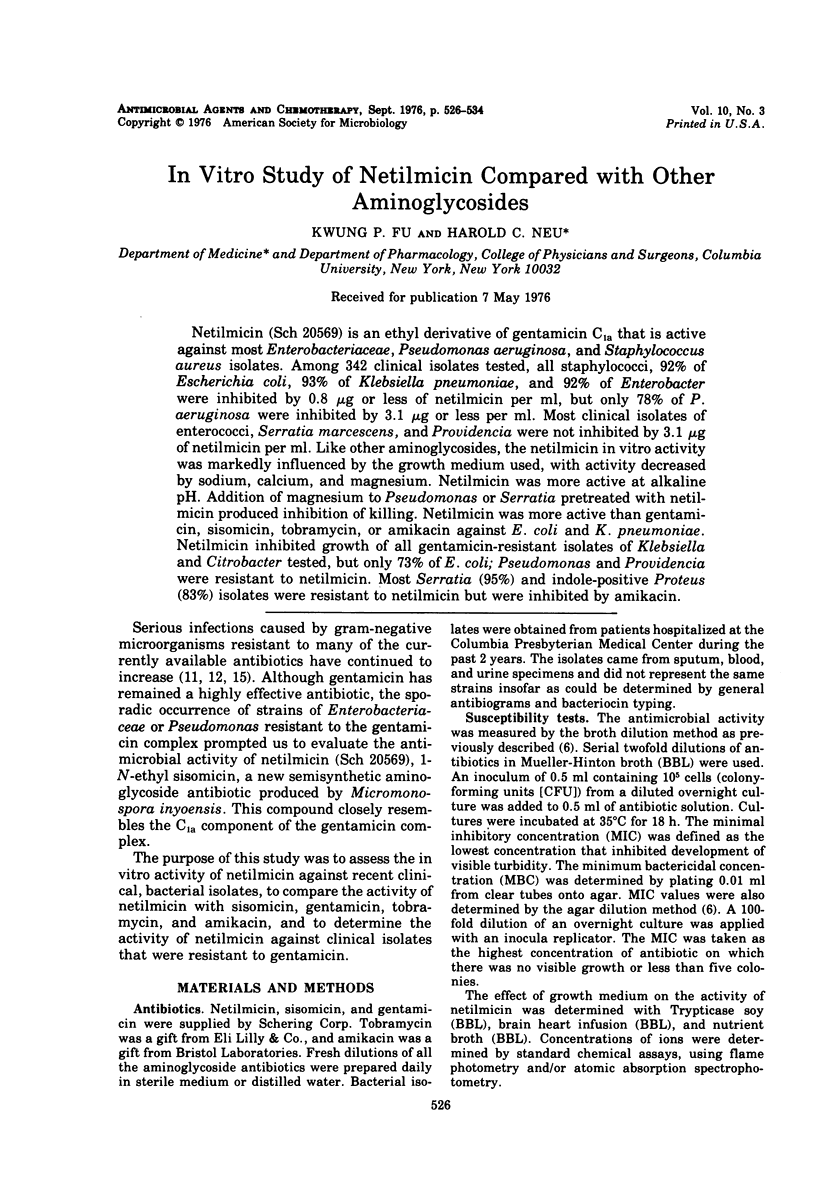

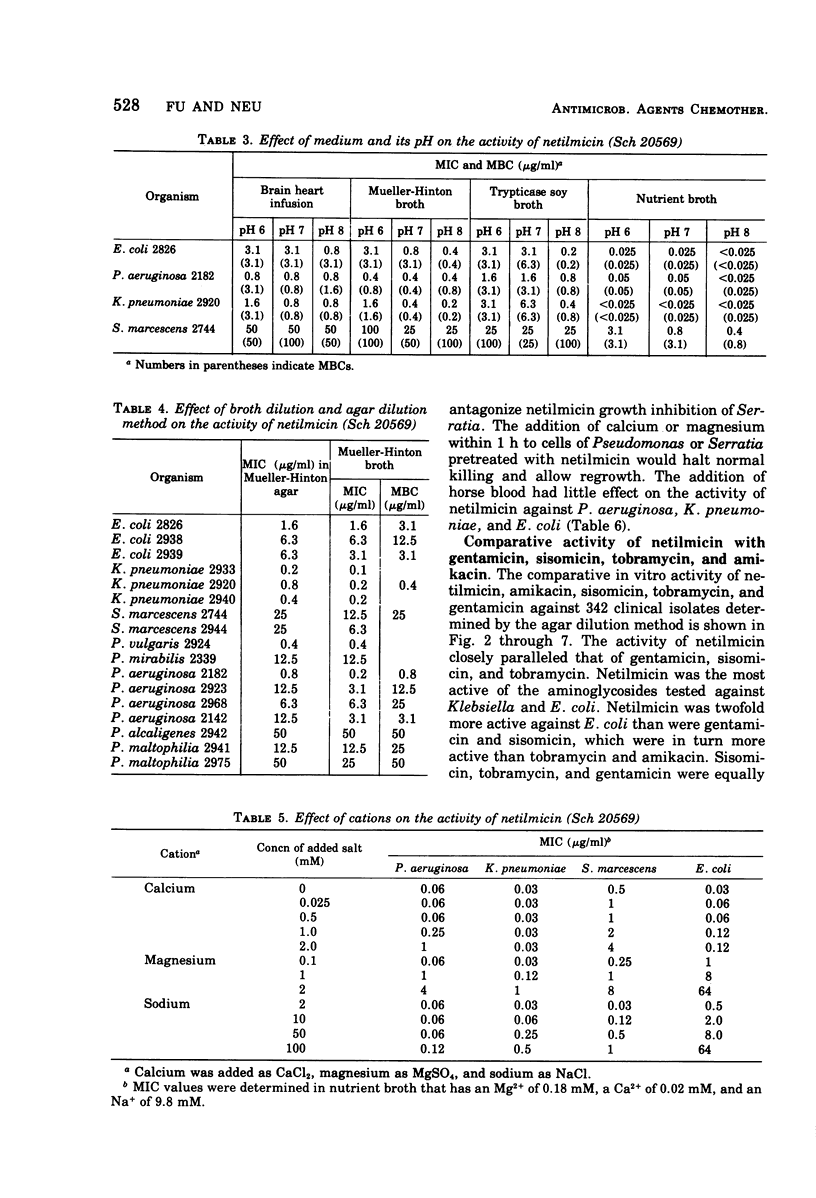

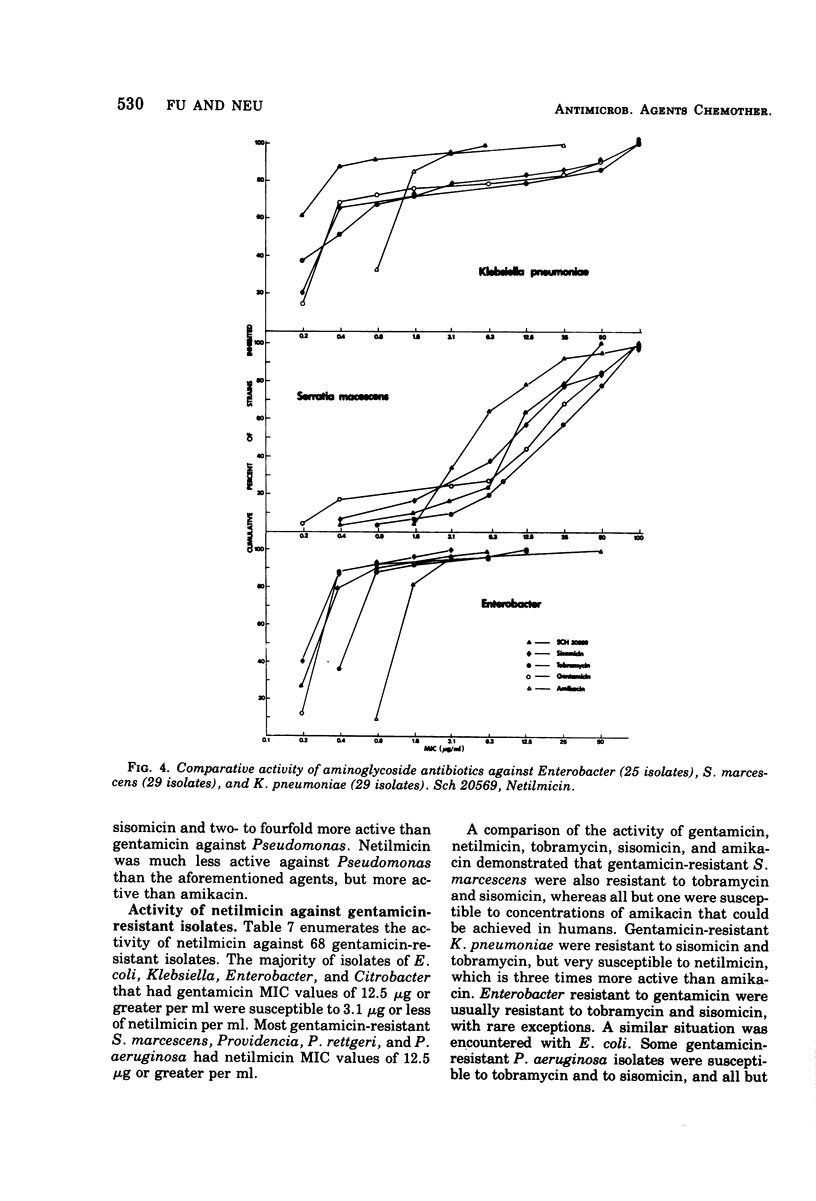

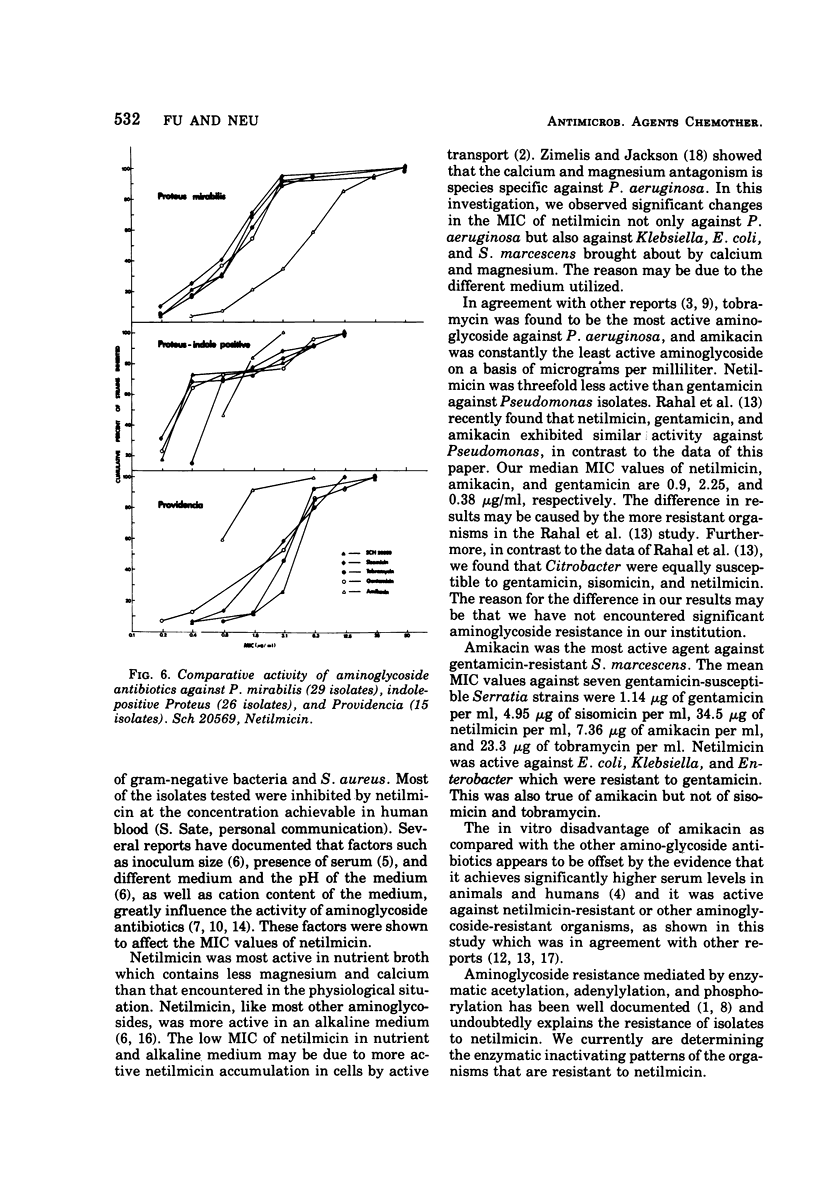

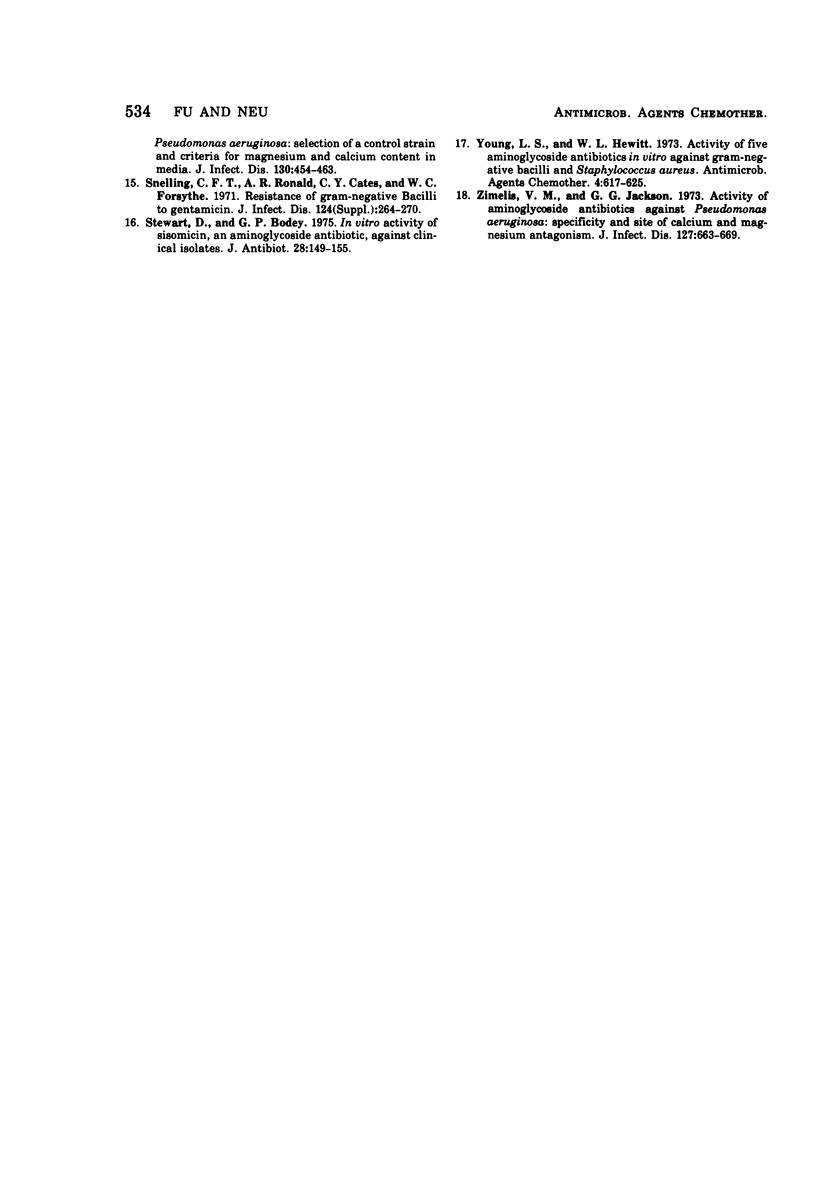
Selected References
These references are in PubMed. This may not be the complete list of references from this article.
- Benveniste R., Davies J. Mechanisms of antibiotic resistance in bacteria. Annu Rev Biochem. 1973;42:471–506. doi: 10.1146/annurev.bi.42.070173.002351. [DOI] [PubMed] [Google Scholar]
- Bryan L. E., Van Den Elzen H. M. Gentamicin accumulation by sensitive strains of Escherichia coli and Pseudomonas aeruginosa. J Antibiot (Tokyo) 1975 Sep;28(9):696–703. doi: 10.7164/antibiotics.28.696. [DOI] [PubMed] [Google Scholar]
- Burger L. M., Sanford J. P., Zweighaft T. Tobramycin: bacteriological evaluation. Am J Med Sci. 1973 Feb;265(2):135–142. [PubMed] [Google Scholar]
- Cabana B. E., Taggart J. G. Comparative pharmacokinetics of BB-K8 and kanamycin in dogs and humans. Antimicrob Agents Chemother. 1973 Apr;3(4):478–483. doi: 10.1128/aac.3.4.478. [DOI] [PMC free article] [PubMed] [Google Scholar]
- Crowe C. C., Sanders E. Sisomicin: evaluation in vitro and comparison with gentamicin and tobramycin. Antimicrob Agents Chemother. 1973 Jan;3(1):24–28. doi: 10.1128/aac.3.1.24. [DOI] [PMC free article] [PubMed] [Google Scholar]
- Dienstag J., Neu H. C. In vitro studies of tobramycin, an aminoglycoside antibiotic. Antimicrob Agents Chemother. 1972 Jan;1(1):41–45. doi: 10.1128/aac.1.1.41. [DOI] [PMC free article] [PubMed] [Google Scholar]
- Kawabe H., Naito T., Mitsuhashi S. Acetylation of amikacin, a new semisynthetic antibiotic, by Pseudomonas aeruginosa carrying an R factor. Antimicrob Agents Chemother. 1975 Jan;7(1):50–54. doi: 10.1128/aac.7.1.50. [DOI] [PMC free article] [PubMed] [Google Scholar]
- Levison M. E., Kaye D. In vitro comparison of four aminoglycoside antibiotics: sisomicin, gentamicin, tobramycin, and BB-K8. Antimicrob Agents Chemother. 1974 Jun;5(6):667–669. doi: 10.1128/aac.5.6.667. [DOI] [PMC free article] [PubMed] [Google Scholar]
- Price K. E., Pursiano T. A., DeFuria M. D. Activity of BB-K8 (amikacin) against clinical isolates resistant to one or more aminoglycoside antibiotics. Antimicrob Agents Chemother. 1974 Feb;5(2):143–152. doi: 10.1128/aac.5.2.143. [DOI] [PMC free article] [PubMed] [Google Scholar]
- Rahal J. J., Jr, Simberkoff M. S., Kagan K., Moldover N. H. Bactericidal efficacy of Sch 20569 and amikacin against gentamicin-sensitive and -resistant organisms. Antimicrob Agents Chemother. 1976 Apr;9(4):595–599. doi: 10.1128/aac.9.4.595. [DOI] [PMC free article] [PubMed] [Google Scholar]
- Roberts G. D., Larsh H. W. A study of the immunocytoadherence test in the serology of experimental sporotrichosis. J Infect Dis. 1971 Sep;124(3):264–269. doi: 10.1093/infdis/124.3.264. [DOI] [PubMed] [Google Scholar]
- Stewart D., Bodey G. P. In vitro activity of sisomicin, an aminoglycoside antibiotic, against clinical isolates. J Antibiot (Tokyo) 1975 Feb;28(2):149–155. doi: 10.7164/antibiotics.28.149. [DOI] [PubMed] [Google Scholar]
- Young L. S., Hewitt W. L. Activity of five aminoglycoside antibiotics in vitro against gram-negative bacilli and Staphylococcus aureus. Antimicrob Agents Chemother. 1973 Dec;4(6):617–625. doi: 10.1128/aac.4.6.617. [DOI] [PMC free article] [PubMed] [Google Scholar]
- Zimelis V. M., Jackson G. G. Activity of aminoglycoside antibiotics aganst Pseudomonas aeruginosa: specificity and site of calcium and magnesium antagonism. J Infect Dis. 1973 Jun;127(6):663–669. doi: 10.1093/infdis/127.6.663. [DOI] [PubMed] [Google Scholar]


